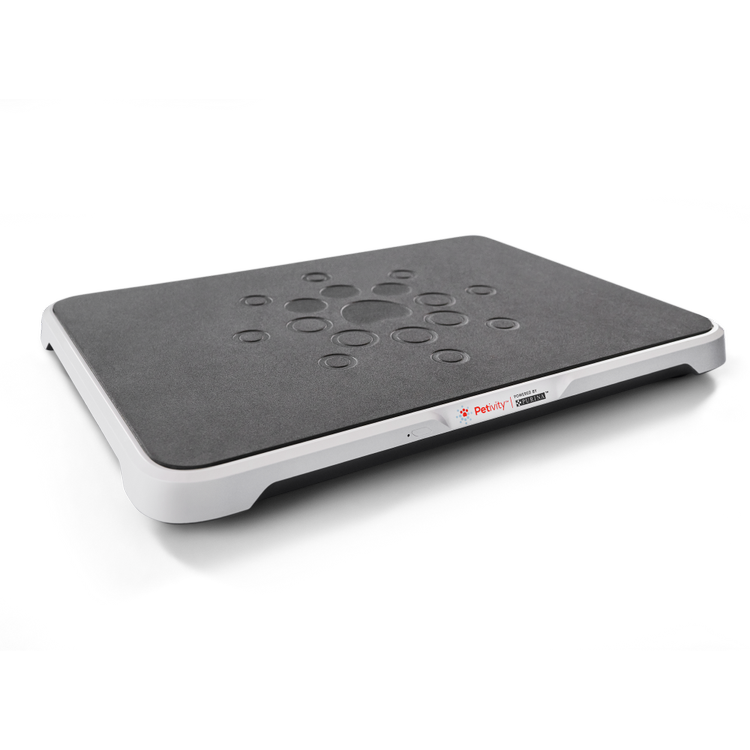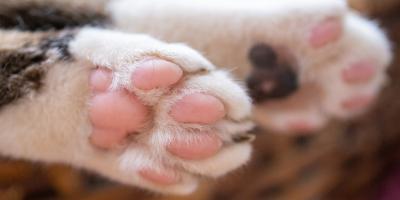Cat Eye Drops: What Owners Should Know


Cat eye drops can be a useful treatment for irritated and infected eyes. But how do you know when to use them and how to apply them? It’s important to consult the vet before purchasing or administering any eye drops to your cat. Keep reading to find out why.
What Are Cat Eye Drops?
Eye drops are a liquid that is prescribed to ease irritation of the eye and sometimes to treat eye infections, and some drops are made specifically for cats’ eyes. Drops are applied to the surface of your pet's eyes to help lubricate them, soothe inflammation and/or treat infections.
How Do I Know if My Cat Needs Eye Drops?
Your vet will be the one to determine if your cat needs eye drops or any other treatment but it’s important to look out for differences in your cat’s eyes and behavior. There will often be distinct signs your cat may have a problem with their eyes. These could include:
- Swollen eyes or inflammation
- Eye discharge that is watery, yellow, green or crusty
- Raised third eyelid
- Partially closed eye
- Attempting to scratch or rub their eyes
- Your cat’s eyes are watering
These problems can often be a symptom of something more serious, so it’s important to get them checked out by your vet. You can also find our guides on various cat illness symptoms for more advice if you have concerns.
Why Would My Cat Need Eye Drops?
There are many illnesses and infections that may require the use of eye drops. Sometimes cat eye drops will be recommended alongside other treatments or will help solve certain problems on their own. Here are a few examples of what may cause eye problems and why you might need eye drops for your cat:
Cat Flu
One symptom of cat flu can be inflamed, running eyes. Depending on what virus your cat has, this can develop into eye ulcers. Eye ulcers are a serious condition which, if not treated, can lead to the loss of the eye. Drops may be recommended to help treat sore eyes and avoid further infection, but won’t cure the virus itself.
Most cats with cat flu can be treated at home by easing symptoms until the flu passes, but some cases can be more severe and require antibiotics or hospitalization. It’s important to see a vet if you suspect possible cat flu, so they can rule out more serious issues and work with you to make a treatment plan.
Allergies
If your cat has allergies, they may get irritated eyes that itch and run. Your vet will suggest the best method for treating their allergies which can include using cat eye drops to help flush out allergens and reduce irritation. If irritation persists or worsens, it may be wise to go back to your vet, so they can rule out any more serious issues and discuss further treatments.
Bacterial Conjunctivitis
Cat conjunctivitis (inflammation of the conjunctiva in the eye) can be due to allergies or cat flu, but it can also be caused by bacteria. Your vet may recommend specific antibiotic eye drops or ointment that’s safe for cats’ eyes to treat the infection.
Scratches
Cats can get a scratched eye from getting into scrapes with other cats, an accident outside or even from overly vigorous playing. Scratches usually heal quickly but this depends on factors like the depth of the scratch, your cat’s health and any bacterial contamination.
Your cat may only need a few days of eye drops to ease their discomfort and prevent infection, but it’s worth getting them checked by a vet rather than leaving it to chance as, in some cases, scratches can deteriorate and result in ulcers or other problems.
Eye Ulcers
Eye ulcers can develop as a result of a cat scratch or an underlying condition like cat flu. They are sometimes visible on the surface of the eye but often require a vet examination to detect them. They’re usually noticed as a result of the irritation, discharge and pain that they cause.
Ulcers are particularly important to treat urgently, as an infected ulcer can deteriorate rapidly and even cause rupture of the eye. If you suspect your cat may have an eye ulcer, you should see a vet urgently.
These are just a few of the reasons your cat may need eye drops. So, if you see irritation, it’s important to consult your vet to find out the exact cause.
Using the Right Eye Drops for Cats
The vet will advise on the best course of treatment for your cat’s particular needs. Depending on the severity of the problem, different eye drops may be suggested.
Antibiotic Eye Drops
Your vet may suggest an eye drop with antibiotics if your cat has an infection in their eye, or is at high risk of an infection. Antibiotic drops for cats’ eyes will prevent infections from establishing or spreading and treat existing infections too. It’s essential the right type of antibiotic drop is used. This needs to be effective against the infection being treated and safe for your cats’ eyes, so you should always consult with your vet to determine the best treatment plan.
Lubricating Eye Drops
For other causes of irritation or very mild scratches, lubricating eye drops may be recommended. These drops can help remove irritants, keep the area clean, and lubricate the surface of the eye to keep your cat comfortable.
Other types of eye drops include medicated anti-inflammatory drops, which are used to treat some specific inflammatory eye conditions.
Make sure you have the right eye drops for your cat’s illness, so you can swiftly treat the problem. It’s important to only use medication prescribed for your cat and not another pet. A dog’s eyes are different to a cat’s eyes, and both are different to humans’ eyes. It could cause more damage if the wrong eye drops are used. Similarly, some types of anti-inflammatory eye drop could be very harmful if used in an eye that’s scratched or ulcerated, so you should always check with your vet before applying any drops.
Can You Use Human Eye Drops on Cats?
Cats’ eyes are very different to our own and you shouldn’t use most human eye drops on them. While your vet may occasionally recommend specific human eye drops that are safe for cats, it can be dangerous to use other human eye drops on your pet, or to use any human eye drops without veterinary guidance. While some irritations may not seem severe at first, eyes are very sensitive and it’s best to go through your vet rather than trying to medicate at home.
Where Can I Get Eye Drops for Cats?
Whilst you can buy eye drops from a variety of places, it’s best to talk to your vet first. This way, they can accurately diagnose what problem your cat may have, and they will recommend the best medication to solve the issue. There are different eye drops for different illnesses, so if you are planning to buy something to ease irritation in your cat’s eyes, always check it with your vet first.
How Do I Use Cat Eye Drops?
When your vet recommends eye drops, they may provide instructions on how to accurately use them. It’s best to have another person to help you apply eye drops. Make sure you also have cat treats ready to reward your pet. Here are some useful tips:
1. Get Your Cat Used to the Medicine
Let your cat sniff and look at the bottle you will be using. The new smell may add stress and make the experience harder for both of you. Give them a treat too so they have a positive association with the bottle.
2. Get in a Comfortable Position
Depending on your relationship with your cat and their personality, you can place your cat on your lap to apply the drops. But if not, find a safe place that your cat is comfortable with and make sure you have easy access to their eyes.
3. Apply the Drops While Keeping Your Cat’s Head Steady
If you’re using an ointment, make sure you have squeezed a little out of the tube so it’s ready. Similarly, make sure the drops are ready to come out if you’re using drops. If you’re right-handed, put the finger and thumb of your left hand above and below your cat's eye and hold their eyelid open firmly. Use your other hand and from the side, bring the eyedrops close to their eye, but be careful not to touch the eye. Carefully squeeze the recommended amount onto the surface of the eye.
4. Treat Time!
Once done, give them a treat as a reward.
What to Do if You are Struggling to Apply Your Cat’s Eye Drops
It’s important to remember every cat is different and if you find the treatment is adding stress you may want to try another approach, as stress may make symptoms worse. If you are struggling to apply eye drops to your cat, talk to your vet and see if they can help you. They may be able to recommend an alternative treatment.
We hope you found this article on eye drops for cats useful. For more advice, read our guide on cat eye infections next.
Related articles

Earn myPurina Rewards with Every Purchase
Use your points for treats, toys, and gift cards with myPurina app.






